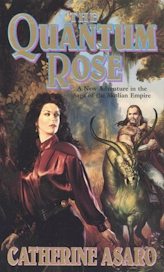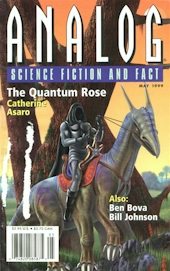
Futuristic Romance in the Saga of the Skolian Empire
2001 Nebula Award Winner
Tor science fiction paperback (left)
cover art by Julie Bell
413 pages
Analog magazine - May 1999 (right)
cover art by George Krauter
features part 1 of 3 of novel serialization

